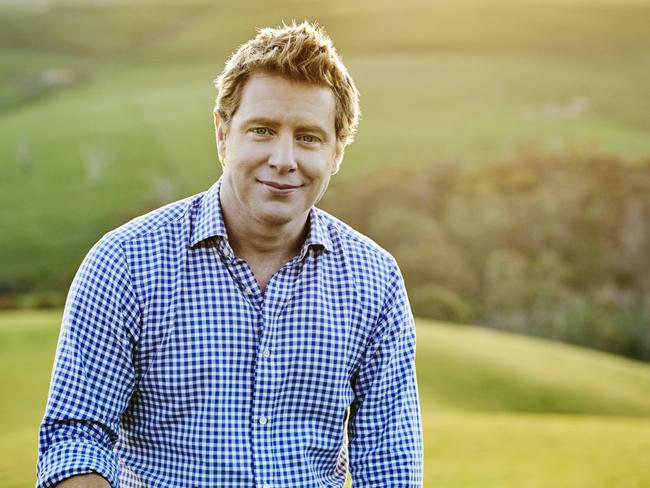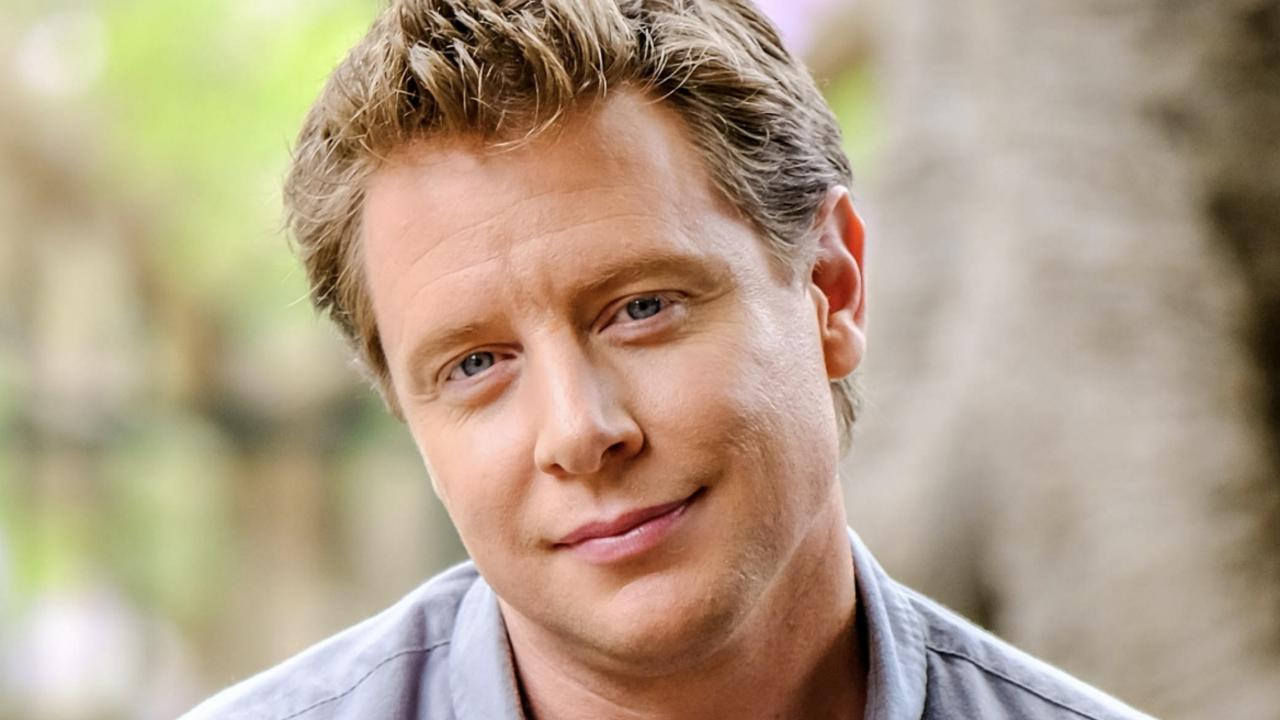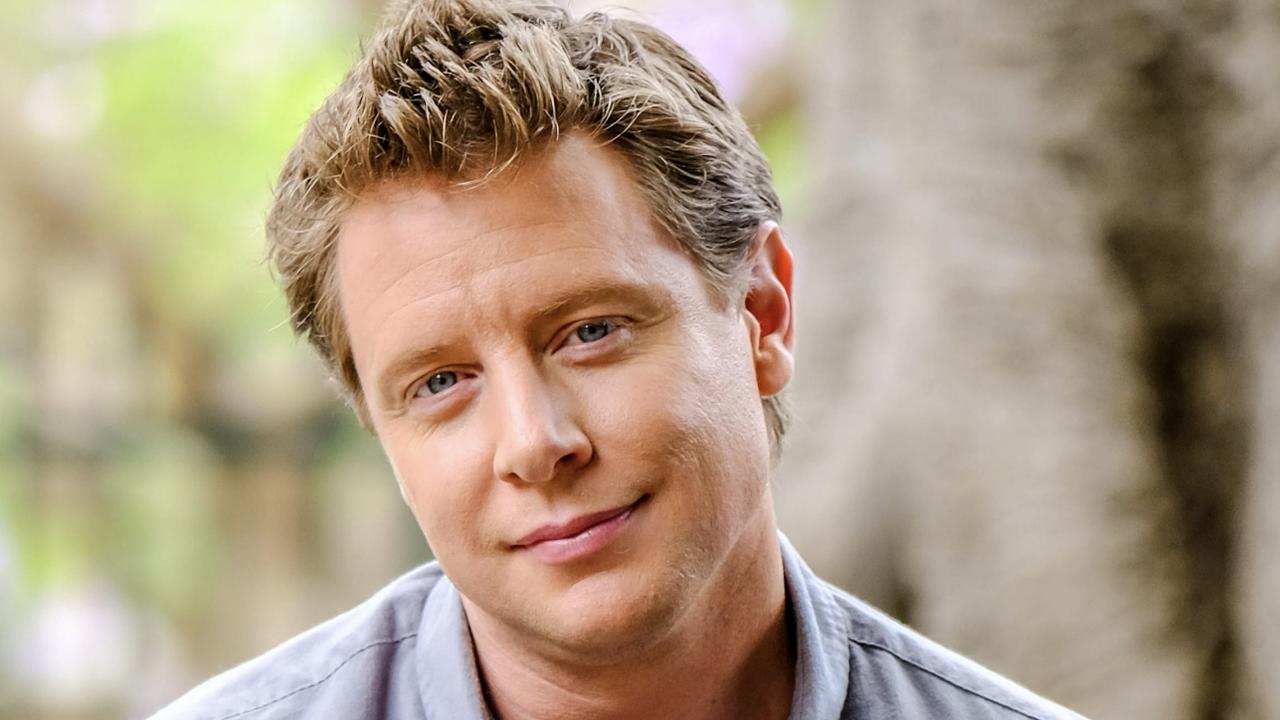Barefoot Investor: Scott Pape’s 2018 financial road map
FOR most people, your pay comes in, money goes out, and you “hope” some is left over to put towards saving. It’s time to get your Mojo back, baby, says the Barefoot Investor.
Barefoot Investor
Don't miss out on the headlines from Barefoot Investor. Followed categories will be added to My News.
HERE’S how we’re going to manage our money,” I announced to my wife, Liz (on our very own Barefoot Date Night).
“Oh, really?” she said, eyebrows raised, head cocked to one side.
See, during the years that Liz and I had been “living in sin”, as my grandmother put it, we’d kept our money separate, splitting things roughly down the middle.
Yet a month out from our wedding I knew it was time to have “the talk”.
To succeed over the long term, I knew I had to come up with a simple, hassle-free plan that operated on autopilot (for Liz) yet moved us forward and built our wealth (for me).
“You’re talking about putting us on a budget, aren’t you?” said Liz, folding her arms.
“Well …”
“Let’s get one thing straight right here. I will not have you dictating every last dollar we spend,” she declared, giving me a factor-10 stink eye.
I assured Liz that I wasn’t advocating we cut our own hair or wear acid-wash jeans from Best & Less (though it really is only a matter of time before they come back into style), and I certainly wasn’t suggesting we follow a strict budget.
So, I decided to make it so simple that I could draw our plan on the back of a serviette.

the Serviette Strategy
Before the parma came, but after the calamari rings, we’d agreed on the three things we really wanted from our money.
Top of our list? To be totally financially secure. Which made sense. After all, we were about to get hitched and we were already pregnant (scandal!).
And, according to Relationships Australia, the biggest cause of relationship breakdowns is fights about money (and monogamy, but mainly money).
The second thing we valued was the freedom to travel at least once a year, and to enjoy nice dinners out with family and friends.
The third thing was to build our wealth over the long term, so we could wind down working sooner rather than later. (Okay, if I’m being really honest, Liz was kind of like “meh” about the exciting world of long-term investing … but she understood it came with the territory when she married the Barefoot Investor.)
It was my time to shine. With one final swig of Carlton Draught for courage, I pulled out a pen and drew our new financial plan on the back of a pub serviette.
The verdict on the First Home Super Saver Scheme
Barefoot Investor: Money in marriage is a team sport

Here’s what I drew:
Yes, our entire money management plan consists of dividing our income into three “buckets”:
A BLOW Bucket, for daily expenses, the occasional splurge and some extra cash to fight financial fires;
A MOJO Bucket, to provide some “safety money”; and
A GROW Bucket, to build long-term wealth and total security.
Don’t for a moment be fooled by the simplicity of the picture. Liz and I have used this plan to manage our investment property, save for our honeymoon, pay off our mortgage, manage a business that earns income in inconsistent lumps, create a solid-as-a-rock emergency account and compound our wealth.
Even better: thousands of people of all ages, income levels and sexual orientations have used my Serviette Strategy with stunning success.

Here’s how it works:
The Blow Bucket
Most people only have one money bucket.
If you’re renting, it’s your transaction account. If you own a home, it might be your mortgage. Either way, your pay comes in, money goes out, and you “hope” some is left over to put towards investing and saving.
And then old Fido finally catches that car. D’oh! Vet bills. And then an unexpected emergency: Christmas. Ho! Ho! D’oh! There’s nothing systematic about it.
Even worse? Your Blow Bucket has a hole in it: every dollar of income you pour into it leaks out the bottom.
This is just as true for a uni student blowing their Austudy on a pub crawl as it is for ’90s rapper MC Hammer, who squandered his $30 million fortune on fancy (leased) cars, a thirsty entourage and (my personal favourite) gold-plated “Hammertime” gates for his home. (“U can’t touch this” — apparently his creditors could.)
The deal with the Blow Bucket is spending more money on the stuff you love and less on the stuff you don’t. Better yet, with this plan you’ll actually allocate some of your pay packet to guilt-free splurges for stuff that’ll put a smile on your dial.
Super satisfaction in a life worth saving for
How to save your assets in a house fire

The Barefoot benchmark: live off 60 per cent of your income
So how much does it cost you to keep the lights running and the kids from drinking out of the dog’s bowl? In other words, how much does it cost to run “You, Inc.”?
Well, a good yardstick is allocating 60 per cent of your take-home pay (i.e., your after-tax household income) to food, shelter and Netflix — all the things you need to live safely in the suburbs.
I want you to try to live off the Barefoot Benchmark of 60 per cent of your pay. Leave that 60 per cent in your “Daily Expenses” account for, well, daily expenses. What about the other 40 per cent?
10 per cent Splurge: You are hereby directed to go out and blow 10 per cent of your take-home pay on anything that makes you feel good (shoes, booze, lattes, whatever).
Set up a regular direct transfer to a separate, linked, account and make it automatic. Then you can spend it how you like. But remember, when your Splurge money for the month is gone, it’s gone — you can’t cut into your other accounts.
10 per cent Smile: Another 10 per cent of your take-home pay should be automatically transferred to an online savings account.
This is not for splurging when you feel like it; it’s for big goals that will take longer to save up for. Overseas holidays, weddings, divorces — anything that is going to cost more than a few weeks’ wages.
I call it the “Smile” account because every time you think of what you’re saving up for, you smile.
20 per cent Fire Extinguisher: Finally, allocate 20 per cent of your take-home pay to your “Fire Extinguisher” account (online saver). Again, make it automatic with a direct transfer every time you get paid. You see, you’re going to use it to put out financial fires.
What’s a financial fire? It could be your crushing credit card debt. It could be the home deposit you’re saving up for. It could be paying off your mortgage.
And that’s the point — your Fire Extinguisher account will be used for different financial fires at different times in your life. The 20 per cent amount won’t change, but what you use it for will.

The Mojo Bucket
The aim of the Mojo Bucket is to get your Mojo back, baby.
You know the feeling — it’s a spring in your step that says, “I don’t stress about money”.
Now, you shouldn’t keep your Mojo in an offset account or a redraw facility attached to your mortgage, and you shouldn’t link it to your everyday transaction account. This is a totally separate, high-interest online savings account that I want you to open up with $2000 to start with.
You only touch it in emergencies, like losing your job or getting sick … or your house burning down.
If you don’t have a spare $2000 to put into your brand new Mojo account, do whatever you can to find this money. Flog stuff on Gumtree, put in overtime at work, sell your kidney.
The Grow Bucket
The third and final bucket I drew for Liz was the Grow Bucket.
The aim of the Grow Bucket is to get a little wealthier every day. Every dollar you pour into the Grow Bucket should double every seven to 10 years (in boom times, it’ll be quicker; in bad times, it’ll be slower). It’s not quick, but over your life, it can make you incredibly wealthy.
Your Grow Bucket includes your super fund and any other investments you own (like shares, investment property, or education savings for your kids). As we work our way through the Barefoot Steps, the Grow Bucket will take centre stage, but right now it’s more than enough just to have your super sorted.
So that’s what I drew for Liz. She sat there, surveying the serviette.
“I like it, Mister Pape.” Success!

FLICK FEES AND SAVE BIG
SWITCH TO FEE-FREE BANKING
With about half an hour’s work, you’re going to save yourself $515 over the next year by banishing bank fees.
FEE-FREE EVERYDAY BANK ACCOUNTS
●The ING Orange Everyday account has zero fees whatsoever. As in, none. Not even those “foreign” ATM fees.
●You could also look at ME Bank’s Everyday Transaction Account.
STEAL MY WALLET
If you stole my wallet, here’s what you’d find:
A picture of me and my golden retriever, Buffett, frolicking on the grass, and … my ING Orange Everyday debit card.
This is a corker of an account. (I get paid nothing for this recommendation. I’m fiercely independent and have no tie-ups with any financial institution, whatsoever.)
In fact, I like the account so much I want you to set up two of them. Plus, two linked savings accounts and one separate savings accounts.
HOW TO SET UP YOUR ACCOUNTS
■ 2 × everyday transaction accounts — call them “Daily Expenses” and “Splurge” and get an ATM card for each (it’s easier if you get your “Daily Expenses” card first, then simply open
another account for “Splurge”)
■ 2 × online savings accounts — call them ”Smile” and “Fire Extinguisher” and link them both to “Daily Expenses”
■ 1 × online savings account with a different institution to your everyday bank account — call it “Mojo".

BAREFOOT’S MENU FOR DATE NIGHT
ENTREE
Whip out your phone and calculate 60 per cent of your take-home pay.
This is your Barefoot Benchmark — how much you should be spending on bare-bones living expenses.
I want you to try to live off the Barefoot Benchmark of 60 per cent of your take-home pay. Remember, this is bare-bones living expenses (think shelter, groceries and bills). Leave that 60 per cent in your “Daily Expenses” account for, well, daily expenses.
Then, calculate your 10-10-20 figures and set up direct deposits to make it automatic:
■ 10 per cent of your take home pay to your “Splurge” account, linked to your Daily Expenses account
■ 10 per cent to an online savings account for longer-term splurges, call this account ”Smile”
■ 20 per cent to an online savings account, called ”Fire Extinguisher” — to fight financial fires such as saving for a home deposit, paying down your mortgage or preparing for retirement
MAIN
I want you to apply online for:
■ 1 × online savings account with a different institution to your everyday bank account — call it ”Mojo”
■ When you open your separate Mojo account, I’d like you to set it up with an initial $2000 deposit. And if you don’t have a spare $2000, look around your house and see what you can flog on Gumtree
■ I’m dead serious
■ Make it your mission to get $2000 in Mojo. It’s a great kick-off for what will become the most psychologically important account you ever create. When you have Mojo, you don’t have financial emergencies
DESSERT
If you’re single? Order whatever the hell you want.
If you’re married? One plate, two spoons. (Get used to it.)

Milking it for all it’s worth
CHANEL ZAGON
DAIRY farmer Jonathon Gleeson bought his dairy farm just weeks ago, after almost a decade of working hard and saving his wages.
Mr Gleeson, 29, had been leasing the farm in Tarrone, west of Warrnambool, for three years before deciding to take a chance on his dream and make the purchase.
“It hasn’t really sunk in yet,” he said. “I’ve always wanted to have my own dairy farm and I’ve been lucky to achieve that.”
The farmer took to the pages of The Barefoot Investor eight years ago and worked tirelessly to buy two properties before the age of 25.
Mr Gleeson has proudly never owned a credit card and said income streams coming from his hard-earned rental properties and work both on and off the farm, were what made his dream a reality.
He is now working to pay off his debts as quickly as possible — a tip he picked up from Scott Pape.
“The best advice I got from him was to save up for a deposit for a home and pay it off as quickly as you can,” Mr Gleeson said.
The farmer is also planning to go out on “Barefoot Date Nights” to discuss finances with his girlfriend, Courtney.
Later down the track, buying more land or investment properties could also be on the cards.
The Barefoot Investor holds an Australian Financial Services Licence (302081). This is general advice only. It should not replace individual, independent, personal financial advice


